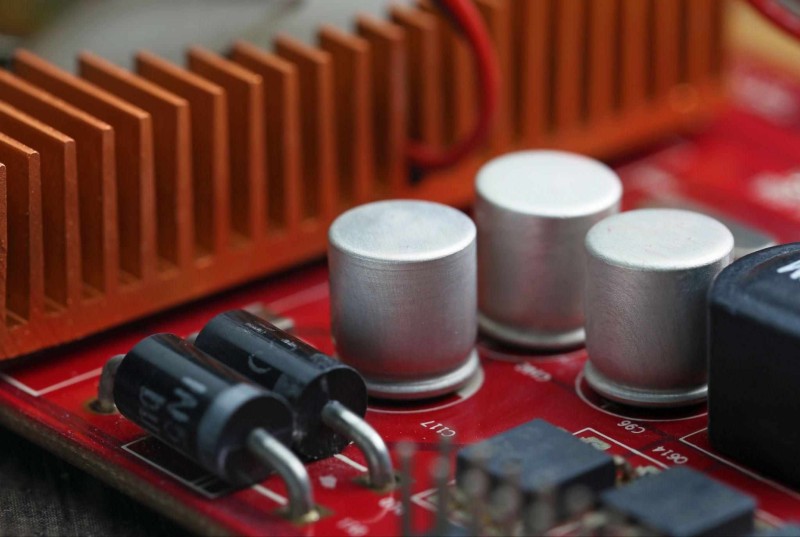Introduction
In the dynamic realm of electrical engineering, the Boost DC Converter stands as a marvel of innovation and ingenuity. This ingenious device, often hailed as a power amplifier, plays a pivotal role in a myriad of applications, from renewable energy systems to portable electronics. This article embarks on an illuminating journey into the world of boost DC converters, delving into their operational principles, applications, and the transformative impact they have on the field of power electronics.
I. The Foundations of Power Amplification
A. Understanding Voltage Regulation
At the core of electrical systems lies the imperative of voltage regulation. It is this precise control over voltage levels that enables electronic devices to function optimally. A boost DC converter, in its essence, is a sophisticated circuit designed to step up or amplify voltage levels, ensuring that electrical components receive the appropriate power supply to operate efficiently.
B. Inductors and Capacitors: The Architectural Pillars
Fundamental to the operation of a boost DC converter are two key components: inductors and capacitors. The inductor, with its capacity to store energy in a magnetic field, serves as the cornerstone of energy transfer within the circuit. It regulates the flow of current, allowing for controlled voltage amplification. The capacitor, on the other hand, acts as a reservoir, storing and discharging electrical energy as required by the load.
II. The Dance of Energy Conversion: Operational Principles
A. The Boost Phase: Storing Energy
The operational cycle of a boost DC converter commences with the storing of energy within the inductor. During this phase, the inductor accumulates electrical energy from the input source, converting it into a magnetic field. This magnetic energy is subsequently stored within the inductor, setting the stage for the amplification process.
B. The Release: Unleashing Amplification
As the operational cycle progresses, the stored magnetic energy is released back into the circuit. This surge of energy elevates the voltage level, allowing it to surpass the input voltage. It is this crucial phase that gives the boost DC converter its name, as it amplifies the voltage to a level higher than the source.
C. Voltage Regulation: Maintaining Stability
Integral to the operation of a boost DC converter is the feedback loop that ensures voltage regulation. This mechanism continuously monitors the output voltage, comparing it to a reference value. If discrepancies arise, the circuitry adjusts the duty cycle of the converter, fine-tuning the energy transfer process to maintain stability and precision.
III. Applications: Empowering Diverse Industries
A. Renewable Energy Systems
In the realm of renewable energy, boost DC converters play a pivotal role in harnessing and optimizing power from sources like solar panels and wind turbines. They facilitate the efficient conversion of variable, low-voltage inputs into stable, higher-voltage outputs suitable for feeding into the electrical grid or storing in batteries.
B. Automotive Electronics
Boost DC converters find a prominent place in the automotive industry, where they serve a multitude of functions. From powering high-intensity discharge lamps to optimizing the voltage levels of battery packs, these converters ensure that critical electronic components operate reliably and efficiently within the complex automotive ecosystem.
C. Portable Electronics
The ubiquity of portable electronic devices, such as smartphones and laptops, is indebted to the miniature marvels of boost DC converters. By providing a stable power supply from relatively small batteries or external sources, these converters enable the seamless operation of power-hungry electronic components, ensuring uninterrupted functionality for users on the go.
D. Aerospace and Satellite Systems
In the unforgiving environment of aerospace and satellite systems, where power efficiency and reliability are paramount, boost DC converters find critical applications. They play a central role in regulating and amplifying voltage levels for avionics, communication systems, and instrumentation, ensuring uninterrupted operation in the harsh conditions of space and aviation.
IV. Efficiency and Advancements: Pioneering the Future of Power Electronics
A. Efficiency Considerations
Efficiency stands as a cornerstone of any power electronic device, and boost DC converters are no exception. Design considerations, including the choice of components, switching frequencies, and control algorithms, are meticulously tailored to maximize efficiency. Through advancements in materials and engineering, modern converters achieve impressive levels of efficiency, minimizing energy losses and optimizing performance.
B. Integration of Semiconductor Technology
The relentless march of semiconductor technology has propelled the capabilities of boost DC converters to new heights. The integration of cutting-edge power transistors and semiconductor devices has led to dramatic improvements in switching speeds and efficiency. These advancements translate into more compact, lightweight, and energy-efficient converters that are reshaping industries and powering the next generation of electronic innovations.
Conclusion: Elevating Power Electronics to New Heights
The boost DC converter, with its ability to amplify voltage levels and facilitate precise voltage regulation, stands as a linchpin in the world of power electronics. From renewable energy systems to aerospace technology, its influence reverberates through a diverse array of industries, driving innovation and enabling the seamless operation of critical electronic systems.
As advancements in materials, semiconductor technology, and engineering continue to push the boundaries of what is possible, the future of boost DC converters shines with promise. With increased efficiency, miniaturization, and adaptability, these converters are poised to play an even more pivotal role in shaping the landscape of modern technology, ensuring that power remains at the heart of innovation and progress.
